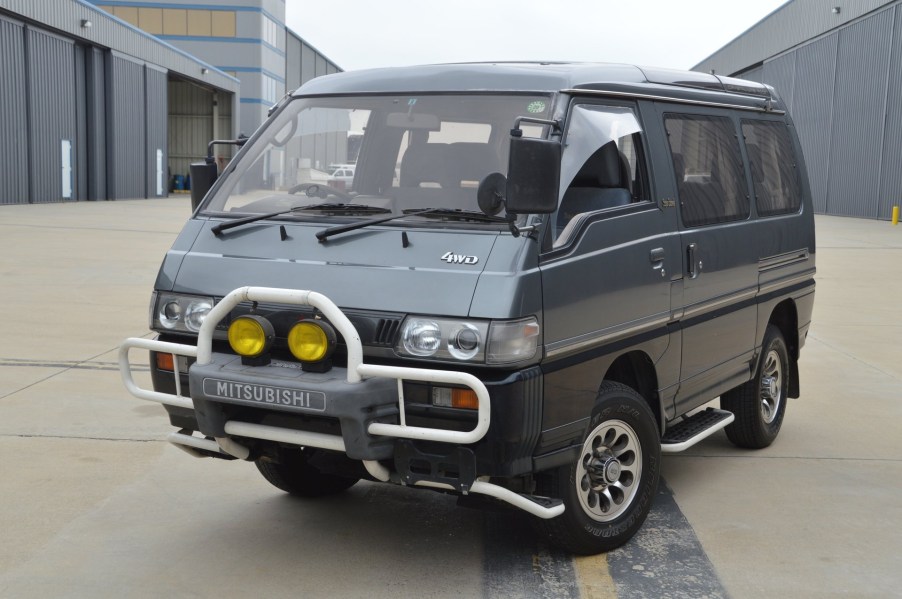
Do #Vanlife Right With a Japanese Van
Overlanding usually features trucks and SUVs, prepped for off-roading and loaded with roof tents or bed campers. Or, if you’re really going off-grid, a specially-prepped Unimog. Equally as popular, though, is “van life”, which sometimes gets reduced—courtesy of Instagram—to be just about decorating an old VW van and sticking to “paved roads and parking lots,” to quote Outside Magazine. But just like an SUV isn’t always the right tool for the job, not every van has to stay on-pavement. If you want something that can do van life and overlanding, you need a Japanese van.
Japanese vans go beyond kei cars

We’ve previously featured another utilitarian JDM product, the kei truck. Some Japanese-market vans, like the Honda Street, do fall under the “kei car” classification, according to Autoweek.
They have engines with capacities more suited for motorcycles than cars, but they come with many of the same amenities as full-size vehicles. These vans offer A/C, sliding doors, seating for 4, and some even have automatics. However, they do struggle on the highway, Jalopnik reported.
But other Japanese vans are more conventionally-sized, with bigger engines. For example, at Radwood Detroit 2019, one owner showed off a Toyota Master Ace Surf, a van only a few inches shorter than a modern Honda Odyssey. The second-row seats can swivel to face the third row, the roof has see-through “Skylight” panels that can be lifted up, according to Japanese Classics, and the owner even told me the center console comes from the factory with a small, built-in freezer.
But these vans have other useful features. For one, many Japanese vans, including kei vans, come with four-wheel drive. That means they can actually go off-road—and they do.
What makes a Japanese van great for overlanding
One of the most popular Japanese vans is the Mitsubishi Delica. Matt Farah of The Smoking Tire even bought a 1991 model recently for his wife. Hagerty reports this is a particularly well-regarded overlanding van because its chassis is based on the Mitsubishi Pajero’s/Montero’s. This is the SUV that won the Paris-Dakar multiple times.

In addition to 4WD with transfer case, these vans were also often fitted with fog lights, extended grille guards, roof racks, and other overlanding/off-roading accessories. In addition, the Delica could be ordered with a turbodiesel engine, making it more fuel-efficient and even more durable. And, much like the Suzuki Jimny, these vans have off-road capabilities that can sometimes surprise people.
While these vans’ ages do mean their safety equipment is rather dated—or, in the case of kei vans, essentially non-existent—their designs make for excellent visibility and seating positions. The larger ones can even seat up to 9 people, or fold down their seats for more storage space. And, just like kei trucks, you can even install campers on the roof.
Pricing and availability

As is the case with off-roading trucks and SUVs, the more overland-modified Japanese vans do command a slight premium. However, these vehicles are still fairly affordable. Bring a Trailer sold several Mitsubishi Delica 4WD models in 2019: the most expensive was $17,400. As of this writing, Toprank Importers has a diesel Mitsubishi Delica 4WD available for $15,495.
Kei vans are even cheaper, with 4WD versions of models like the Honda Acty Street and Subaru Sambar selling for as little as $5,000. And while they do have limited wheel travel stock, that hasn’t stopped owners from off-roading them as-is or fitting some extensive modifications.
So, if you want to give your #vanlife ‘grams that little extra something, or want an unconventional alternative to the usual Jeeps and 4Runners, keep Japanese vans in mind.
Follow more updates from MotorBiscuit on our Facebook page.


